FROM EDITOR-IN-CHIEF
REAL-WORLD STUDIES
This study aims to improve methodological approaches for conducting research in real-world practice. As an example of a real-world study, we present a comparative study of the use of botulinum toxin type A drugs as a part of medical technology for the treatment of spasticity syndrome in children with cerebral palsy. The methodological approaches proposed in this study can become the basis for organizing and conducting comparative clinical trials of drugs of the same pharmacotherapeutic group and contribute to the formation of framework criteria for real-world studies. The introduction of integrative methodological approaches to clinical trials in practice is designed to optimize pharmacotherapy and improve the efficiency of the healthcare system.
MANAGEMENT AND ECONOMICS OF PHARMACY
Relevance. Preserving and strengthening the health of the population is the most important task of the healthcare system, including pharmacy organizations. Therefore, it is important to unite the efforts of medical and pharmaceutical specialists to form a unified preventive environment in the region. This will make it possible to rationally distribute the resources of healthcare organizations in the fight against chronic non-communicable diseases and increase citizens’ satisfaction with accessible preventive care.
Methodology. To achieve the goal and solve the assigned problems, content analysis, comparative and logical analysis, and observation and graphic methods were used. The objectives of this study were to obtain regulatory documentation data, the main strategies and recommendations of the World Health Organization in the field of protecting public health, the infrastructure of pharmacy organizations, and consumer opinion.
Results. The study highlighted the main aspects of preventive activities, which are the actions of pharmaceutical specialists toward preserving public and individual health. The current state of preventive work of pharmacies in the Yaroslavl region has been studied, and the most common preventive services have been identified. The need for the formation of a unified preventive environment in the region with the participation of pharmacies is substantiated as one of the ways to improve the professional activities of pharmaceutical specialists in the prevention of chronic non-infectious diseases. A model of a unified preventive environment for the regional healthcare system was developed, indicating the general and specialized functions of the organizations. An assessment of the effectiveness of the implementation of preventive services in the activities of pharmacy organizations was conducted.
Conclusion. An analysis of the current state of preventive activities of pharmacy chains indicates the potential of a pharmacy organization to implement a wider range of preventive services. Combining the efforts of healthcare professionals through the formation of a unified preventive environment with the participation of pharmacy organizations can provide a significant impetus in the fight against chronic non-communicable diseases.
Relevance. Standardization of business processes of turnover of immunobiological drugs in structural subdivisions of the medical organization will improve the effectiveness of medical care in the immunological diagnosis, prevention and treatment of various diseases.
Objective. The purpose of this study was to standardize business processes for the circulation of medical products in structural divisions of medical organizations.
Methodology. The content analysis methods, comparative analysis, logical analysis, grouping and structural analysis were used. The analysis of the requirements of the regulatory framework in the field of circulation of immunological medicines, local organizational and management documents and business processes of the activities of structural subdivisions of a medical organization in the field of turnover of immunobiological drugs was carried out.
Results. The direction of standardization of turnover of immunobiological drugs in structural subdivisions have been identified and recommendations for the healthcare organization as a whole have been developed on their basis.
Conclusion. The use of the recommendations is aimed at improving the effectiveness of medical care with the use of immunobiological drugs.
Relevance. In the healthcare system of the Russian Federation, there is the use of drugs by the population without a physician’s appointment (including prescription leave), as well as violation of the principles of responsible self-medication. Under the current conditions, a pharmacist can play a key role in providing pharmaceutical care within the framework of responsible self-treatment and providing citizens with accessible information on the rational use of drugs.
Objective. The study of the role of the pharmacist in the system of rational use of drugs by visitors of pharmacy organizations.
Materials and methods. The study used methods of content analysis, sociological research (observation), comparative and mathematical statistical analysis. Regulatory documents regulating the activities of pharmacists were analyzed, as well as monitoring of pharmacy visitors who applied to a pharmacist in order to purchase drugs.
Results. The professional standards of pharmacists contain requirements for ensuring or organizing the rational use of drugs by the population for the purpose of responsible self-treatment. The majority of pharmacy visitors (63.8%) purchase drugs bypassing a medical professional. A significant proportion of buyers (58.7%) do not know or approximately know what caused their poor health. At the same time, the proportion of pharmacy visitors who assume that they do not need to be prescribed by a medical professional is quite high and amounts to 41.3%.
Conclusion. A low level of readiness of pharmacy visitors for the rational use of drugs has been established and the need for regular educational work on the part of pharmacists on responsible self-medication has been identified.
Relevance. Patients with diabetes mellitus (DM) in the Russian Federation have the right to receive free medications. Despite this, some patients with DM experiencing difficulties at various stages of preferential treatment are forced to purchase medications at their own expense. Medical workers (MW) who receive patients and pharmaceutical workers (PW) of preferential dispensing points (PDP), who dispense drugs on preferential terms and provide pharmaceutical information (PI) to patients, are of considerable interest as competent sources of opinion about the quality of the organization of drug provision.
Objective. To conduct a comparative sociological study of the organization of PDP for patients with DM in the Novosibirsk region (NSR) using the method of questioning MW and PW.
Materials and methods. The materials used were the MW and PW questionnaires developed by the authors. During the study, the following methods were used: sociological survey (questioning), content analysis, comparative analysis, induction, and logical method.
Results and discussion. 71% of MW must deal with various difficulties when issuing preferential prescriptions for drugs. These include: absence of drugs in the preferential list (29%), funding limit (29%), and absence of drugs in the PDP (35%). An average level of compliance in taking medications by patients with DM according to the MW was revealed, with a low interest in PI according to PDP workers. 45% of PW experience difficulties when conducting PI of patients with DM. The majority of PW (88%) consider the range of PDP in which they work to be rich in international nonproprietary names, trade names, and release forms of both oral hypoglycemic drugs and insulins.
Conclusions. The results obtained allow us to conclude that the drug provision system for patients with DM in the NSR needs to be optimized. Based on the results of the survey, the main directions of optimization can be identified: increasing the availability of drugs in the PDP and increasing the competence of the PDP’s PW through the development of additional training materials and activities.
PHARMACOGNOSY AND PHARMACEUTICAL TECHNOLOGY
Relevance. Extemporaneous manufacturing of preparations is an important component of modern patient-oriented medicine. This article provides an analysis of regulatory documents regulating the manufacture of drugs in a pharmacy, identifies problems and weaknesses in rationing production, and proposes constructive ways to solve the problems presented.
Methodology. When conducting the study, methods of content analysis, comparative and logical analysis, and observation were used.
Results. This article provides a critical analysis of the legal framework regulating the extemporaneous production of drugs. Weaknesses in the regulation of pharmaceutical production of dosage forms have been identified. In particular, the following problems are presented: checking the doses of active pharmaceutical substances and assessing the compatibility of prescription ingredients; issues related to the expiration dates of extemporaneously manufactured medicinal products; and problems with regulating conditions for the manufacture of drugs in pharmacies. Difficulties in equipping pharmacies with small-scale mechanization and aspects of the provision of modern active pharmaceutical ingredients and excipients are reflected, and the potential of physicians in prescribing extemporaneous prescriptions is noted.
Conclusion. The proposed solutions to the identified problems will allow extemporaneous production to a new, more advanced level and expand the capabilities of personalized medicine.
PALLIATIVE CARE
Adequate pain relief through individual tailoring of the basic analgesic in suited dose and drug formulation, as well as the use of adjuvant and supportive therapy, relieves the suffering of patients with advanced cancer in most cases. Noninvasive opioids in immediate and modified release formulations play a key role in treating severe chronic pain syndrome. We present a series of case studies to illustrate morphine tablet and oral solution administration as part of an individual pain therapy regimen, such as opioid dose titration, treatment of breakthrough pain, and around-the-clock pain control.
UROLOGY
IgM nephropathy, although a rare and controversial disease, attracts the attention of both morphologists and clinicians. The issues of etiopathogenesis, epidemiology and treatment of this pathology are currently insufficiently studied. A variety of morphological manifestations under light microscopy make immunofluorescence examination crucial for diagnosis. Although IgM nephropathy shares clinical and morphological features with minimal change disease and focal segmental glomerulosclerosis, it has its own characteristics that not all scientists recognize as sufficient to classify it as a separate nosological form. It is necessary to coordinate morphological criteria for the diagnosis of IgM nephropathy. Clarifying the pathogenetic mechanisms of the development of this disease will help determine the place of IgM nephropathy among primary glomerulopathies. A rare case of association of IgM nephropathy and Hodgkin's lymphoma is presented.
ANESTHESIOLOGY AND RESUSCITATION
A difficult airway is a life-threatening clinical situation in which a trained anesthesiologist experiences difficulty ventilating the upper airway with a tight mask, difficulty intubation the trachea, or both. This is an important socio-economic problem that makes a significant contribution to the structure of intraoperative mortality and disability of patients. A clinical observation of difficult airways in a patient with ankylosing spondylitis who was scheduled to have a brain tumor removed is presented.
Адрес редакции и издательства:
ООО «Издательство ОКИ»
115522, Москва, Москворечье ул., 4-5-129
Генеральный директор Афанасьева Елена Владимировна
Тел. + 7 (916) 986-04-65; Email: eva88@list.ru



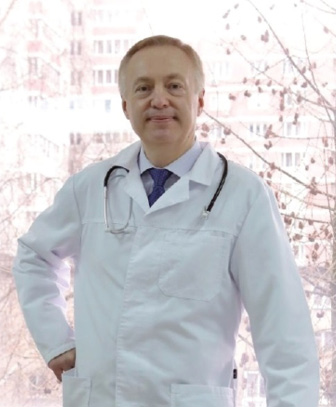
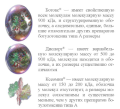

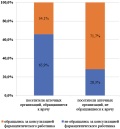


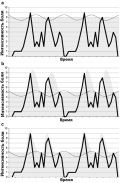
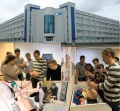





























.png)
